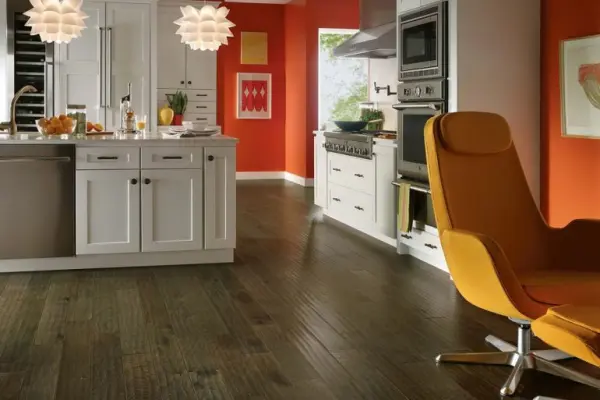Parquet floors in 2025 remain a symbol of prestige. Parquet sanding can save up to 50% of the cost of new flooring, costing owners $3-6 per square foot compared to $10-15 for new material. Parquet restoration not only revives the original appearance but also extends the floor's lifespan by 10-15 years, making the investment highly cost-effective. By the way, modern parquet sanding technologies make this process more eco-friendly and efficient than ever before.
Historical trivia interests many. The word "sanding" comes from the German "Zykel," meaning a tool for planing wood. The parquet scraper was used as early as the Middle Ages to restore floors in European castles.
Choose sanding over replacement - it’s economical, eco-friendly, and preserves the unique character of your home. A well-sanded parquet can withstand up to 7 sanding cycles, equivalent to 50-70 years of use.
What is Parquet Sanding: Technology and Necessity
.jpg) Sanding is the process of removing the surface layer. Modern sanding machines have significantly sped up the process compared to manual scrapers. In practice, I often notice that many owners delay parquet renewal until it reaches a critical state, which significantly increases the cost of parquet sanding.
Sanding is the process of removing the surface layer. Modern sanding machines have significantly sped up the process compared to manual scrapers. In practice, I often notice that many owners delay parquet renewal until it reaches a critical state, which significantly increases the cost of parquet sanding.
The decision to restore the flooring is made when characteristic signs of wear are present. The main indications for parquet treatment include the following defects:
- Appearance of deep scratches and scuffs from furniture
- Darkening and wear of the protective varnish coating
- Formation of gaps between parquet planks
- Uneven floor surface and height differences
Timely detection of these issues allows for parquet repair before it reaches a critical state. The cost of work is significantly reduced with early intervention.
In my experience working with private clients, I’ve encountered floors that haven’t been sanded for 20-30 years. It’s not always easy. But it’s effective.
Parquet Sanding Equipment: Types and Applications
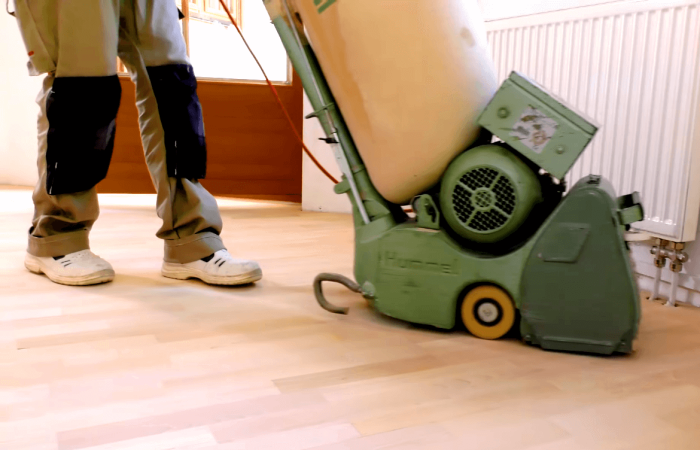 Choosing the right parquet sanding machine determines the quality of the result. A drum sander is suitable for rough processing of old coatings. A flat sander ensures a flawless European-style finish with a perfectly smooth surface.
Choosing the right parquet sanding machine determines the quality of the result. A drum sander is suitable for rough processing of old coatings. A flat sander ensures a flawless European-style finish with a perfectly smooth surface.
It’s worth noting the importance of dust collection systems. Modern equipment includes effective filters, which is especially important for families with children and allergy sufferers. Such systems significantly reduce the amount of dust and allergens in the room - like an air filter for the health of the entire family.
Modern equipment includes effective dust collection systems, which is especially important for families with children and allergy sufferers. These systems reduce the amount of allergens in the home by up to 90%.
| Machine Type | Application | Work Speed | Surface Quality |
|---|---|---|---|
| Drum | Rough processing of old floors | High | Medium |
| Flat | Finish processing | Medium | High |
| Belt | Intermediate processing | Medium | Medium |
| Angle | Hard-to-reach areas | Low | High |
This table will help you choose the right equipment based on specific tasks and the condition of the parquet.
As an example: a family from a small town decided to restore a Victorian parquet from 1890 instead of replacing it. The craftsman used modern dust-free technology and eco-friendly varnish. In a week, the parquet was restored, preserving the historical herringbone pattern. The result exceeded expectations - buyers highlighted the restored floor as the home’s main advantage.
Preparatory Work for Sanding and Room Protection
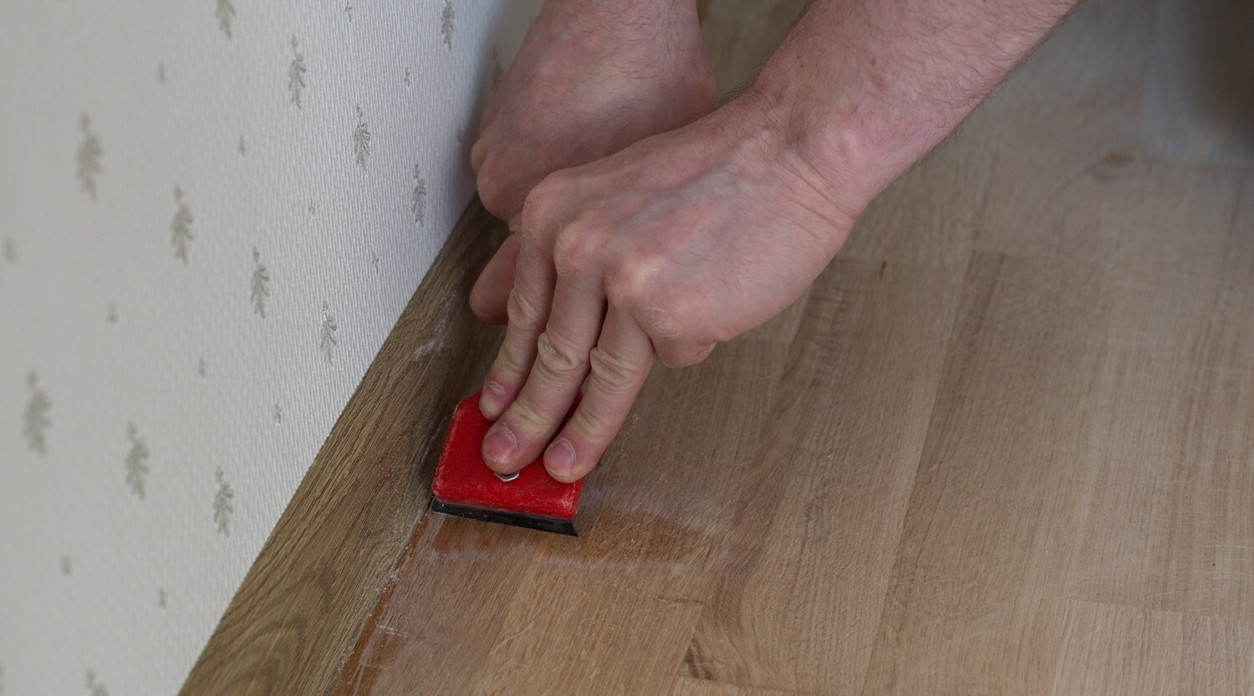 Proper preparation is the key to successful parquet restoration. The room is completely cleared of furniture, which is either removed or securely covered with plastic. Adjacent rooms are isolated with damp sheets to prevent dust spread.
Proper preparation is the key to successful parquet restoration. The room is completely cleared of furniture, which is either removed or securely covered with plastic. Adjacent rooms are isolated with damp sheets to prevent dust spread.
All metal elements are removed or recessed with a punch by 2-3 mm. The surface is thoroughly cleaned with an industrial vacuum cleaner. Wood filler is prepared for sealing large defects.
It’s known that wood moisture content before work should be 8-10%. The room temperature is maintained at 18-22°C. Considering the structural features of old houses, additional material acclimatization for 7-10 days may sometimes be required.
Parquet Sanding Technology
.jpg) The coating restoration process includes several stages with clear timeframes. Rough sanding with a drum machine removes old varnish on the first day of work. Subsequent sanding of the wooden floor creates a perfectly smooth surface in another day.
The coating restoration process includes several stages with clear timeframes. Rough sanding with a drum machine removes old varnish on the first day of work. Subsequent sanding of the wooden floor creates a perfectly smooth surface in another day.
Modern parquet machines are equipped with dust collection systems. This allows for dust-free sanding even in residential spaces. Sandpaper for parquet is changed in stages: from coarse (40-60 grit) to fine (100-120 grit), with each stage requiring thorough wood dust removal.
| Work Stage | Execution Time | Equipment | Result |
|---|---|---|---|
| Rough Sanding | 1 day | Drum Machine | Varnish removal, leveling |
| Intermediate Sanding | 4-6 hours | Flat Sander | Scratch removal |
| Finish Sanding | 2-4 hours | Vibratory Sander | Perfect smoothness |
| Varnishing (3 layers) | 3-5 days | Roller/Sprayer | Protective coating |
The total time for wooden floor restoration is 5-8 days, depending on the complexity of the work. Drying between varnish layers requires patience and adherence to technological pauses.
Abrasive materials are selected based on the wood species. Exotic woods require a special approach and specific compounds. Detailed parquet sanding techniques from British experts provide valuable practical advice for working with various wood types. Thus, the correct choice of materials is critical for the quality of the result.
Remember: rushing during sanding leads to unevenness and the need for rework. It’s better to spend extra time on each stage than to fix mistakes.
Parquet Varnishing: Types and Application Technology
.jpg) Varnishing parquet is the final stage of floor renewal. The choice of wood protective coating depends on the room’s purpose. Modern solutions in 2025 offer a variety of options:
Varnishing parquet is the final stage of floor renewal. The choice of wood protective coating depends on the room’s purpose. Modern solutions in 2025 offer a variety of options:
- Polyurethane varnishes - maximum wear resistance, suitable for commercial spaces
- Water-based acrylic varnishes - eco-friendly, quick drying (2-3 hours between layers)
- Alkyd varnishes - deep penetration, highlighting wood texture
- Oils and waxes - natural, allowing for localized repairs
The right choice of coating material determines the durability of the restored floor. Each type of coating has its own application and maintenance specifics.
Technology is advancing rapidly. Parquet primer ensures better adhesion and saves 10-15% of the main coating. Parquet varnishing is done in 2-3 layers with intermediate sanding using P220-P240 abrasives, ensuring perfect adhesion between layers. Final floor treatment creates a protective coating that lasts 7-10 years with proper care.
Thus, professional sanding includes: removing old varnish, leveling the floor surface, filling gaps, priming, and multi-layer varnishing.
How to Order Parquet Sanding: Choosing a Contractor
The choice of contractor determines the quality of the result. The durability of the restored coating depends on the craftsman’s professionalism. When searching for a floorboard restoration specialist, pay attention to key selection criteria:
- License and insurance - confirmation of the right to perform work
- Project portfolio - before and after photos with timelines
- Equipment type - modern machines with dust extraction
- Warranty obligations - at least 12 months for completed work
- Detailed estimate - breakdown by materials and work stages
Adhering to these criteria ensures the selection of a reliable contractor. Professional sanding requires a comprehensive approach to every stage of the work.
An experienced craftsman always conducts a preliminary inspection. They determine the wood species and assess the scope of work with maximum accuracy. Beware of overly low prices - quality parquet sanding at a low cost is only possible with proven technologies, not by cutting corners on materials. After all, the stingy pay twice, especially in construction.
A proven way to evaluate a craftsman: ask to see recent work in your area. A professional always has current examples and contacts of satisfied clients.
DIY Floor Sanding: Reality or Risk?
.webp) Is it possible to sand parquet yourself? The question is relevant for many homeowners. Theoretically - yes, practically - with serious risks for beginners. Renting equipment will cost $150-300 for a weekend, but inexperience can lead to damage costing thousands of dollars.
Is it possible to sand parquet yourself? The question is relevant for many homeowners. Theoretically - yes, practically - with serious risks for beginners. Renting equipment will cost $150-300 for a weekend, but inexperience can lead to damage costing thousands of dollars.
In my experience with private clients, I’ve seen unfortunate examples of DIY attempts. Deep grooves from improper use of a drum machine. Restoration cost twice as much. This Old House’s expert guide explains common mistakes in DIY floor restoration in detail.
Professional parquet sanding services include a comprehensive approach to wooden floor restoration. The advantages of hiring specialists are clear and include the following aspects:
- Proper selection of equipment and abrasives for each wood type
- Adherence to parquet sanding technology at every stage
- Provision of a written quality guarantee for completed work
- Saving the client’s time and effort without compromising results
It’s known that a professional approach guarantees quality. Parquet sanding services by a craftsman are a more cost-effective solution compared to DIY, especially for owners of valuable wood species.
Preparation and Quality Control of Work
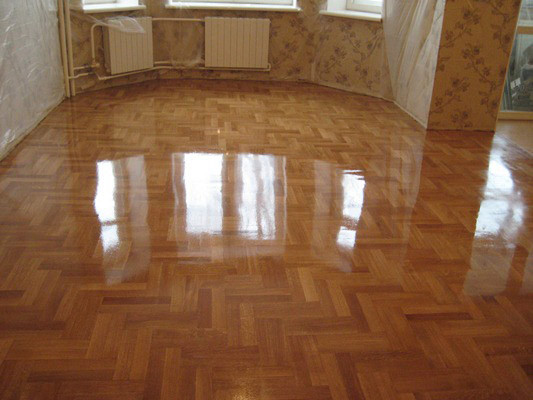
Preparatory Stage: What to Consider
Proper preparation for turnkey parquet sanding determines the success of the entire operation. The following stages cannot be ignored when organizing work:
- Complete removal of furniture and decorative elements from the room
- Removal of baseboards with numbering for subsequent reinstallation
- Checking wood moisture content with a moisture meter (up to 12% is normal)
- Protecting adjacent rooms with plastic and painter’s tape
- Ensuring 220V power supply for professional equipment
Thorough preparation saves time and prevents additional costs. Skipping any stage can negatively impact the final result’s quality.
Floor Surface Leveling: Quality Criteria
Accepting the results requires attention. Professional work must meet strict quality standards. The inspection includes the following parameters:
- No scratches or scuffs across the entire floor surface
- Uniform color and texture of natural wood
- Smooth coating without varnish drips or runs
- Quality treatment of corners and hard-to-reach areas
- Adherence to room geometry and smooth transitions
Considering technical requirements, professional parquet renewal must meet all listed quality criteria. Any deviations from standards are grounds for rework.
Proper Care for Parquet After Restoration
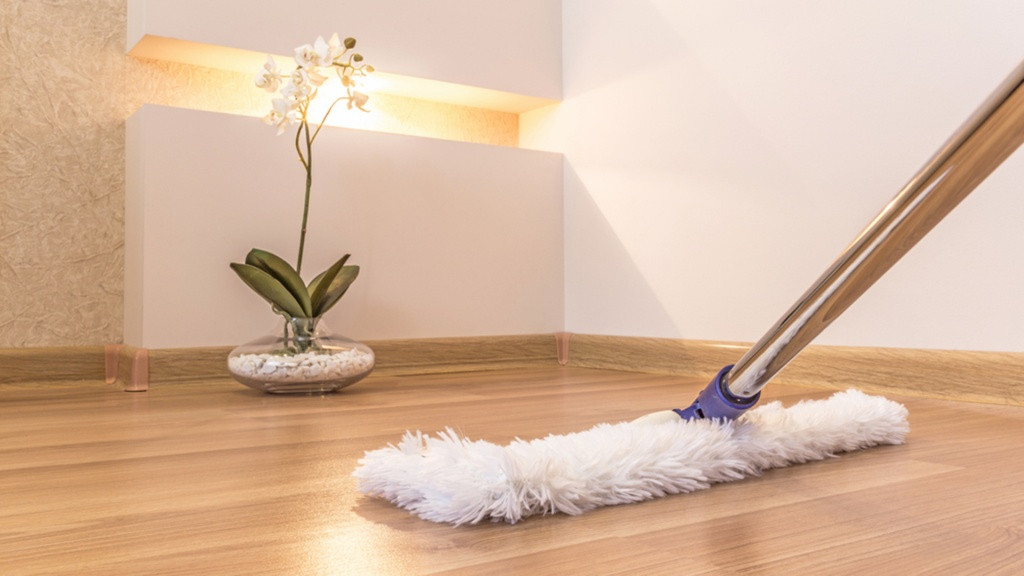 Proper care extends the results of sanding for years. Use specialized parquet products and avoid excessive moisture. Felt pads on furniture prevent scratches.
Proper care extends the results of sanding for years. Use specialized parquet products and avoid excessive moisture. Felt pads on furniture prevent scratches.
Maintain humidity at 40-60% and temperature at 18-22°C. It’s like caring for a living organism - parquet “breathes” and responds to microclimate changes.
Regular cleaning with specialized products preserves the shine and protective properties of the varnish coating. Avoid aggressive chemicals and abrasive products.
Investing in quality sanding pays off by preserving property value and living comfort. It’s a solution for decades, not years.
Parquet sanding in 2025 remains an optimal solution. Restoring wooden floors is economically more advantageous than full replacement, saving up to 50% of the budget. Practical approaches make the process fast, eco-friendly, and durable for any budget. When choosing between DIY and professional services, consider the complexity of the work, as a professional approach guarantees quality that will delight for years to come.
